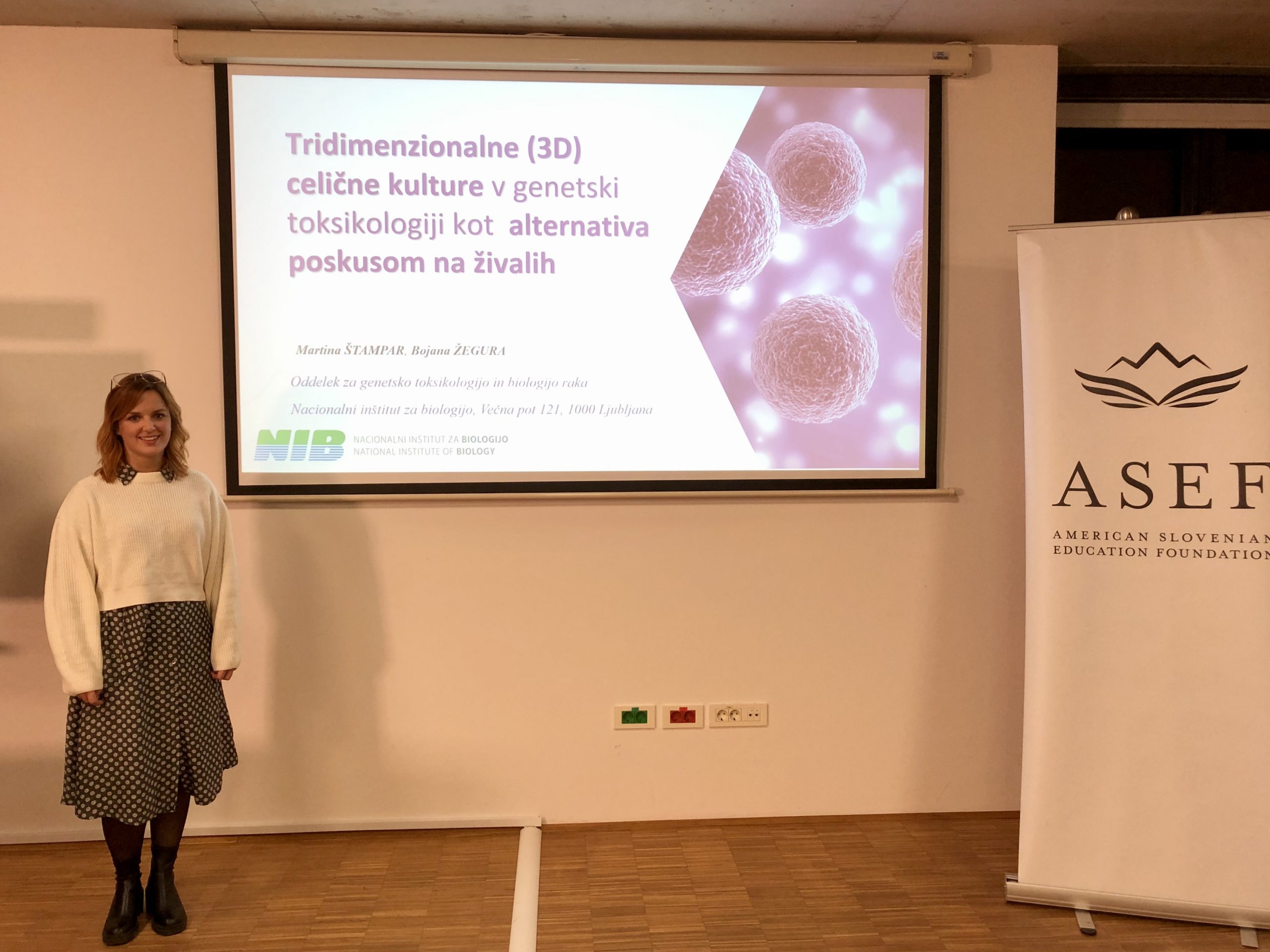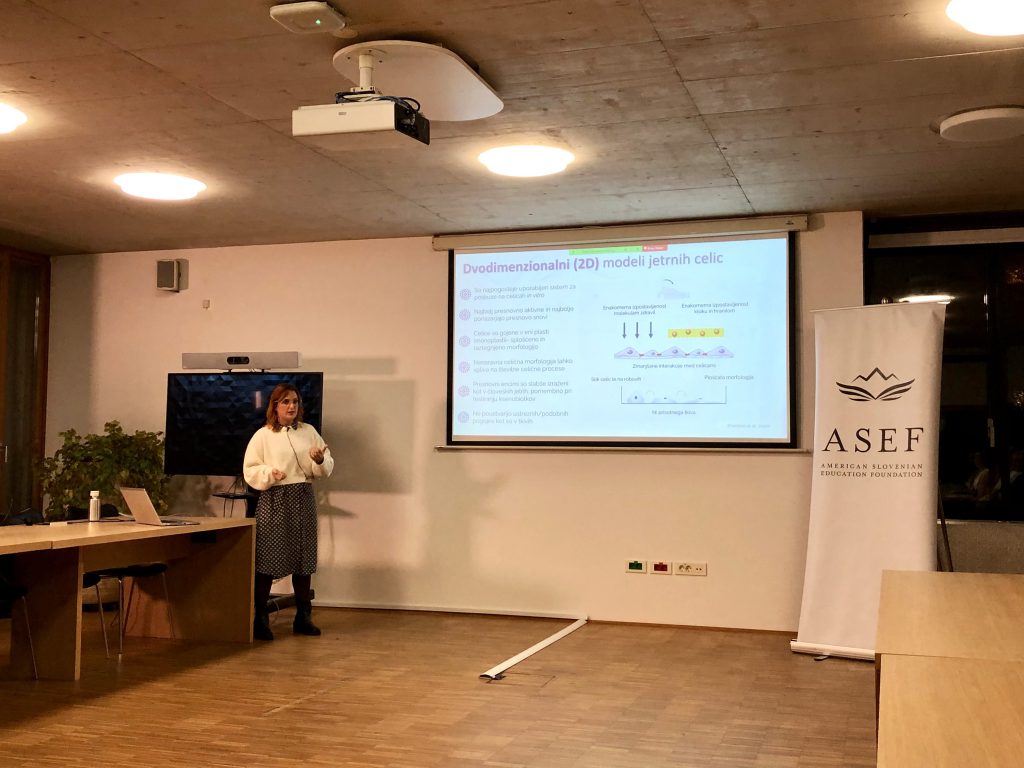
Three-dimensional (3D) Cell Cultures in Genetic Toxicology as an Alternative to Animal Testing
On Thursday, November 9, we opened the 2023/2024 season of the ASEF Speaker Series cycle. The new season of popular science lectures, where ASEF professors present their research areas and findings on a monthly basis, was opened by dr. Martina Štampar with the lecture “Three-dimensional (3D) Cell Cultures in Genetic Toxicology as an Alternative to Animal Testing”.
Dr. Martina Štampar is a research associate at the National Institute of Biology in the department of genetic toxicology and cancer biology. She began the lecture with a presentation of the department where she works and the new premises of the department, which will enable even better quality research. After a short introduction, she talked about the fact that we are exposed to many chemicals, drugs and biological factors on a daily basis, which can affect our health and also our environment. Therefore, assessing the genetic toxicity of substances is crucial in determining the safety of these substances.

For testing the genotoxicity of new chemicals and substances, which is prescribed by the European Union, two-dimensional cell models are used, and for most tests even animals – rodents – are used. The lecturer emphasized that in recent decades, researchers have been trying to develop new and better models that could replace at least one part of the animal testing in research. This is where three-dimensional (3D) models of liver cells, called spheroids, come into play. These models can be developed from any type of cells, and the lecturer also presented the different techniques of how spheroids are formed.
She showed two videos that vividly demonstrated working with spheroids in the laboratory. The lecturer explained that 7-day trials are then recommended on such models. She also spoke about the dynamic ClinoStar™ system, which allows working with models for up to 35 days.
Dr. Štampar presented the main findings of their research, which compared the effectiveness of using 2D and 3D models, and explained that the more efficient 3D models still need to be standardized in order to be able to move into general use. She also dedicated a few words to the projects in which the National Institute of Biology actively participates, or even leads. One of them is CutCancer.
At the end of the lecture, many interesting questions arose, through which dr. Štampar explained which types of cells are most often used to develop spheroids, how the results on spheroids compare with results from animal models, which cells are the most interesting to analyze after the experiment is over, and more.

The event was held in a hybrid format, both at the Biotechnical Faculty, University of Ljubljana and via Zoom, and was moderated by 2022 Junior Fellow Meta Kodrič.
The event was organized with the support of the Government Office for Slovenians Abroad and the Office of the Republic of Slovenia for Youth.

